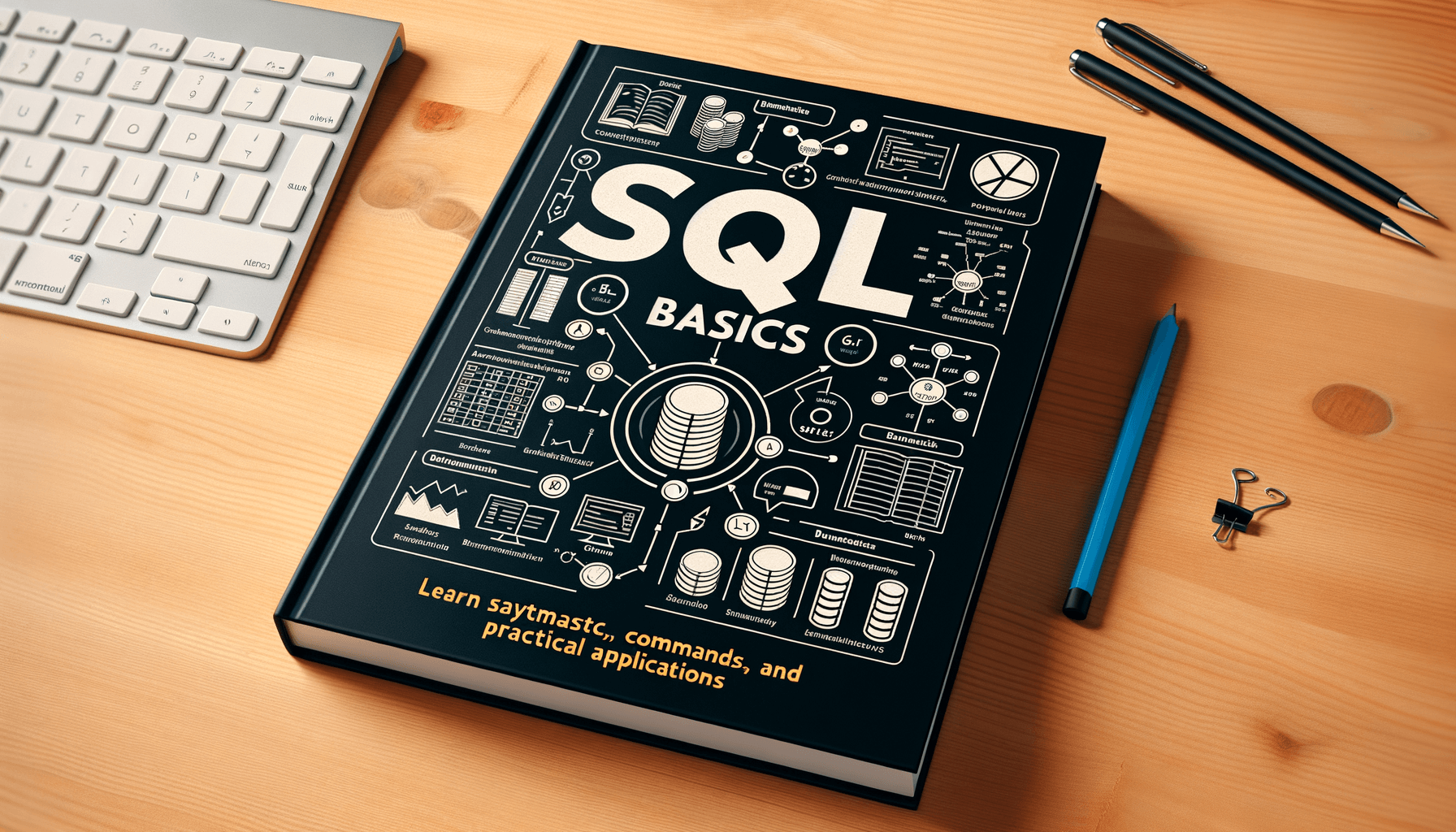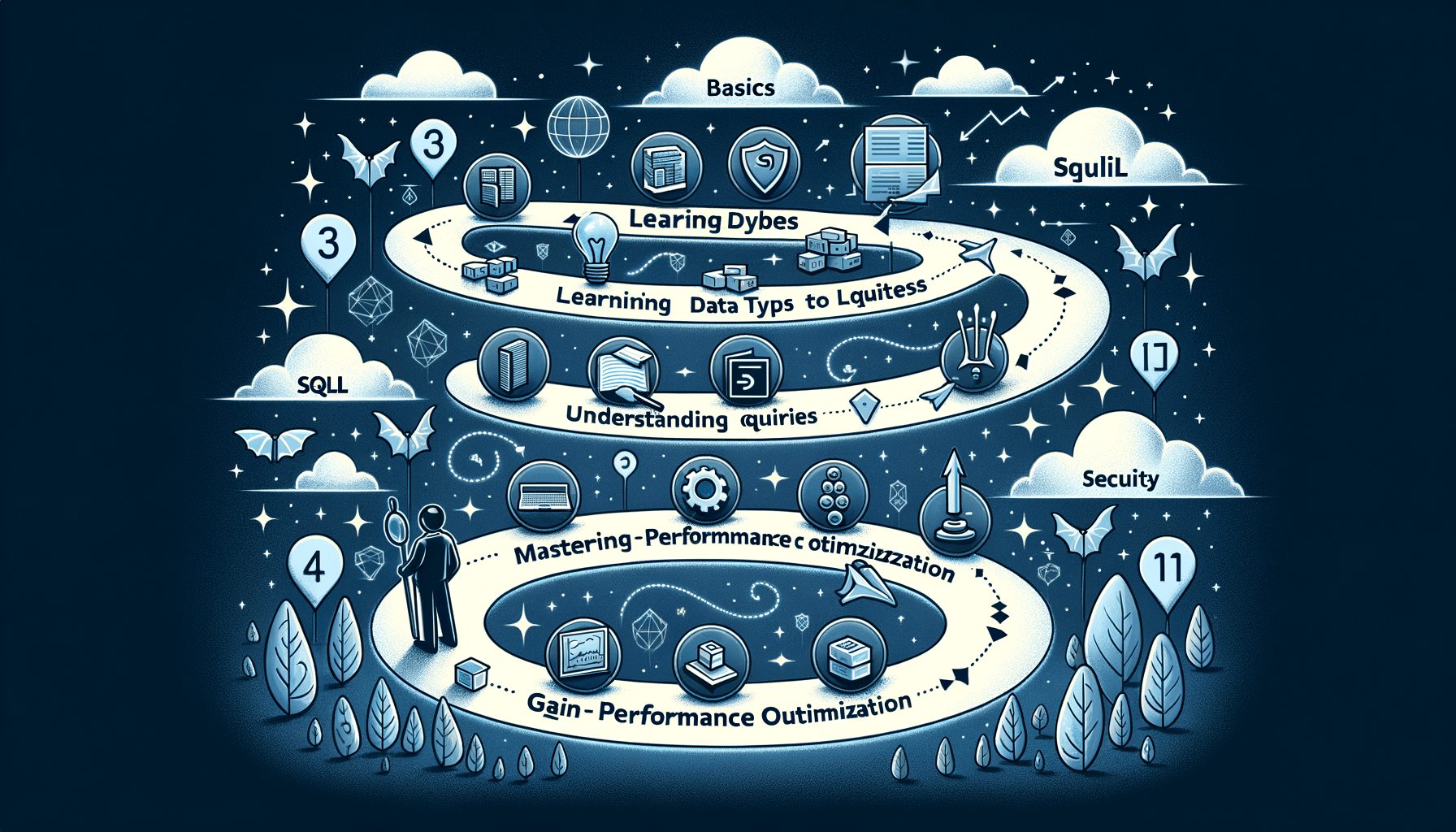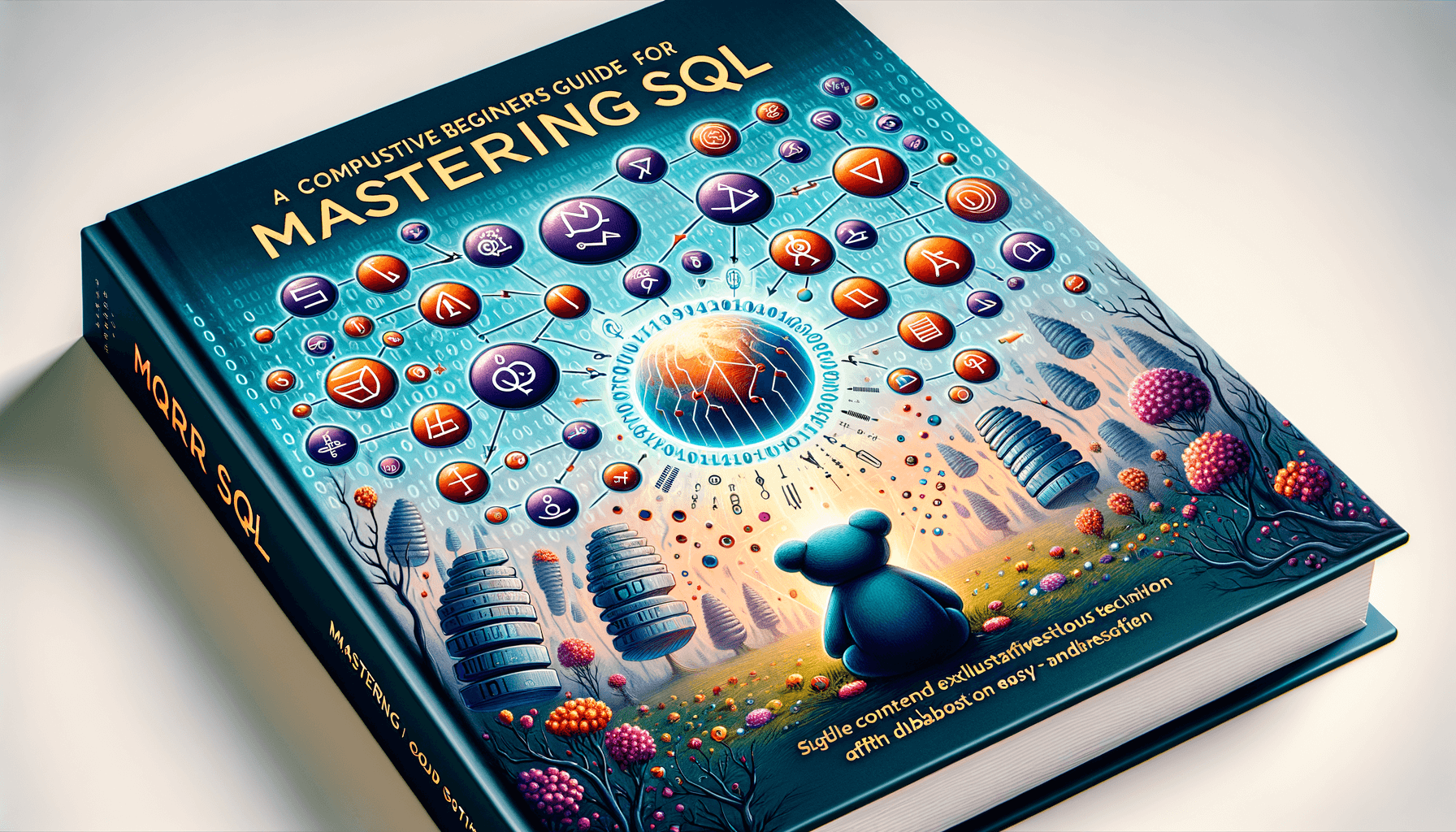A big variety of articles and resources

Mastering SQL for Beginners: A Comprehensive Guide to Getting Started
 Sia Author and Instructor
Learn SQL
Sia Author and Instructor
Learn SQL
14 minute read
Are you new to the world of databases and eager to learn SQL? This guide will walk you through everything you need to get started. From setting up your workspace to mastering advanced queries, we've got you covered. SQL is a powerful tool for managing data, and learning it can open many doors in the tech world. Let's dive in and start your journey to becoming an SQL pro!
Key Takeaways
- SQL is essential for managing and querying databases.
- Setting up your SQL environment correctly is the first step.
- Basic SQL commands are the building blocks of more complex queries.
- Advanced techniques like joins and subqueries enhance your data handling skills.
- Ongoing practice and learning are crucial for mastering SQL.
Understanding SQL and Its Importance
What is SQL?
SQL, or Structured Query Language, is a standard language used to communicate with databases. It allows you to create, read, update, and delete data stored in a database. SQL is essential for managing and manipulating data efficiently.
The Role of SQL in Data Management
SQL plays a crucial role in data management by enabling users to handle large amounts of data effectively. It is used in various applications, from business analytics to web development. With SQL, you can perform complex queries to extract meaningful insights from your data.
Why Learn SQL as a Beginner?
Learning SQL as a beginner opens up numerous opportunities in the tech world. It is a foundational skill for careers in data analysis, software development, and database administration. Mastering SQL can significantly enhance your ability to work with data and make informed decisions.
SQL is a valuable asset for aspiring professionals, unlocking opportunities in the data-driven world.
Setting Up Your SQL Environment
Choosing the Right SQL Software
When starting with SQL, selecting the right software is crucial. There are several options available, such as MySQL, PostgreSQL, and SQLite. Each has its own strengths and weaknesses, so it's important to choose one that fits your needs. MySQL is popular for web applications, while PostgreSQL is known for its advanced features.
Installing SQL Tools
Once you've chosen your software, the next step is installation. Most SQL tools offer straightforward installation processes. For example, MySQL provides an installer that guides you through each step. Make sure to follow the instructions carefully to avoid any issues.
Configuring Your SQL Workspace
After installation, configuring your workspace is essential for efficient workflow. This includes setting up user accounts, permissions, and database connections. Proper configuration ensures that you can manage your databases effectively and securely.
Setting up your SQL environment correctly from the start can save you a lot of headaches later on. Take the time to understand each step and follow best practices.
Basic SQL Syntax and Commands
Understanding SQL Statements
SQL statements are the building blocks of any SQL operation. They allow you to interact with the database, perform queries, and manipulate data. Mastering these statements is crucial for anyone starting with SQL.
Common SQL Commands
Here are some of the most common SQL commands you will use:
- SELECT: Retrieves data from a database.
- INSERT: Adds new data to a database.
- UPDATE: Modifies existing data.
- DELETE: Removes data from a database.
These commands form the core of SQL operations and are essential for efficient data retrieval.
Writing Your First SQL Query
Writing your first SQL query can be exciting. Start with a simple SELECT statement to fetch data from a table. For example:
SELECT * FROM users;
This command retrieves all records from the users table. As you get comfortable, you can move on to more complex queries.
Understanding the basics of SQL syntax and commands is the first step towards mastering database querying. With practice, you'll be able to perform more advanced operations and optimize your queries for better performance.
Working with Databases and Tables
Creating and Managing Databases
When starting with SQL, one of the first things you'll need to do is create and manage databases. A database is a structured collection of data, and SQL provides the tools to create, modify, and delete these databases. Creating a database is usually done with the CREATE DATABASE statement. Once created, you can manage it using various SQL commands.
Understanding Table Structures
Tables are the fundamental building blocks of a database. Each table consists of rows and columns, where each column represents a specific type of data, and each row is a data entry. Understanding table structures is crucial because it helps you organize your data efficiently. You can define tables using the CREATE TABLE statement, specifying the columns and their data types.
Inserting and Modifying Data
After setting up your tables, the next step is to insert and modify data. This is done using the INSERT INTO statement for adding new records and the UPDATE statement for modifying existing ones. It's important to ensure that the data you insert is accurate and consistent to maintain the integrity of your database.
Working with databases and tables is a foundational skill in SQL. Mastering these basics will set you up for more advanced topics like querying and data manipulation.
Mastering SQL Queries
Selecting Data with SQL
When you start working with SQL, one of the first things you'll learn is how to select data from a database. The SELECT statement is the most commonly used command in SQL. It allows you to retrieve specific data from one or more tables. For example, you can use SELECT * FROM table_name to get all the data from a table.
Filtering Data Using WHERE Clause
The WHERE clause is essential for filtering data. It helps you specify conditions that the data must meet to be included in the results. For instance, if you want to find all users who signed up after a certain date, you can use SELECT * FROM users WHERE signup_date > '2023-01-01'.
Sorting and Limiting Results
Sorting and limiting your query results can make your data more manageable. The ORDER BY clause allows you to sort the data based on one or more columns. You can also use the LIMIT clause to restrict the number of rows returned. For example, SELECT * FROM users ORDER BY signup_date DESC LIMIT 10 will give you the ten most recent signups.
Mastering these basic SQL queries is crucial for anyone looking to work with databases effectively. They form the foundation for more advanced techniques and ensure you can handle data efficiently.
Using SQL Functions and Operators
Mathematical Functions in SQL
Mathematical functions in SQL are essential for performing calculations on data. These functions include basic arithmetic operations like addition, subtraction, multiplication, and division. For example, you can use the SUM function to add up values in a column or the AVG function to find the average value. Understanding these functions can help you manipulate numerical data effectively.
String Functions and Manipulation
String functions allow you to manipulate text data in your SQL queries. Common string functions include CONCAT for joining strings, SUBSTRING for extracting parts of a string, and LENGTH for finding the length of a string. These functions are particularly useful when dealing with text data, such as names or addresses.
Logical Operators and Conditions
Logical operators in SQL, such as AND, OR, and NOT, are used to combine multiple conditions in a query. These operators help you filter data based on complex criteria. For instance, you can use the AND operator to find records that meet multiple conditions simultaneously. Mastering these operators is crucial for writing efficient and accurate SQL queries.
By mastering SQL functions and operators, you can perform a wide range of data manipulations and analyses, making your SQL skills more versatile and powerful.
Advanced SQL Techniques for Beginners
Joining Tables with SQL
Joining tables is a fundamental skill in SQL. It allows you to combine data from multiple tables based on a related column. There are several types of joins, including INNER JOIN, LEFT JOIN, and RIGHT JOIN. Each type serves a different purpose and can be used to retrieve specific data sets. Mastering these joins will enable you to handle complex queries and enhance your data retrieval capabilities.
Subqueries and Nested Queries
Subqueries, also known as nested queries, are queries within queries. They allow you to perform more complex operations by breaking them down into simpler, manageable parts. Subqueries can be used in SELECT, INSERT, UPDATE, and DELETE statements. They are particularly useful for filtering data and performing calculations on subsets of data.
Using Indexes for Optimization
Indexes are special database objects that improve the speed of data retrieval. By creating indexes on columns that are frequently used in search conditions, you can significantly enhance query performance. However, it's important to use indexes wisely, as they can also slow down data modification operations like INSERT, UPDATE, and DELETE. Understanding how to balance the use of indexes is crucial for efficient database management.
Learning these advanced SQL techniques will not only make you proficient in handling complex queries but also prepare you for real-world applications in data analysis and marketing.
Ensuring Data Integrity and Security
Implementing Data Validation
Data validation is crucial for maintaining the accuracy and reliability of your database. By setting rules and constraints, you can ensure that only valid data enters your system. This step is essential to avoid errors and maintain the quality of your data.
- Check Constraints: Ensure that data meets specific criteria before it is added to the database.
- Data Types: Use appropriate data types to prevent invalid data entries.
- Unique Constraints: Avoid duplicate entries by enforcing unique constraints on key fields.
Using Transactions in SQL
Transactions help in maintaining data integrity by ensuring that a series of operations are completed successfully before making any changes permanent. If any operation fails, the transaction can be rolled back, leaving the database in its original state.
- BEGIN TRANSACTION: Start a new transaction.
- COMMIT: Save all changes made during the transaction.
- ROLLBACK: Undo all changes if an error occurs.
Using transactions is a fundamental practice in SQL to ensure that your database remains consistent and reliable.
Securing Your SQL Database
Security is a top priority when managing databases. Implementing robust security measures protects your data from unauthorized access and potential breaches.
- User Authentication: Ensure that only authorized users can access the database.
- Encryption: Encrypt sensitive data to protect it from being read by unauthorized users.
- Access Controls: Define user roles and permissions to limit access to critical data.
By focusing on these areas, you can significantly enhance the security and integrity of your SQL database, making it more reliable and trustworthy for all users.
Practical Applications of SQL
Real-World SQL Use Cases
SQL is used in many real-world scenarios. For example, businesses use SQL to manage customer data, track sales, and analyze trends. Healthcare providers use SQL to store patient records and manage appointments. Understanding these applications can help you see the value of learning SQL.
SQL in Data Analysis and Reporting
In data analysis, SQL is essential for querying large datasets to find meaningful insights. Analysts use SQL to generate reports that help businesses make informed decisions. Mastering SQL can significantly enhance your ability to analyze data and create detailed reports.
Building Data-Driven Applications
Developers use SQL to build applications that rely on data. For instance, e-commerce websites use SQL to manage product inventories and customer orders. By learning SQL, you can create robust, data-driven applications that meet various business needs.
SQL is not just a tool for database administrators; it's a versatile skill that can be applied in many fields, from business to healthcare to technology.
Troubleshooting Common SQL Issues
Identifying and Fixing Syntax Errors
When working with SQL, syntax errors are common, especially for beginners. Syntax errors occur when the SQL code does not follow the correct syntax rules. To identify these errors, carefully review your SQL statements for typos, missing keywords, or incorrect punctuation. Using an SQL editor with syntax highlighting can help spot these mistakes quickly.
Optimizing Query Performance
Slow queries can be frustrating and impact the performance of your database. To optimize query performance, consider the following steps:
- Use Indexes: Indexes can significantly speed up data retrieval.
- *Avoid Using SELECT : Specify only the columns you need.
- Optimize Joins: Ensure that joins are using indexed columns.
- Analyze Query Execution Plans: Use tools to understand how your query is executed and identify bottlenecks.
Handling Database Conflicts
Database conflicts, such as deadlocks and lock timeouts, can disrupt your operations. To handle these conflicts, you can:
- Implement Transactions: Use transactions to ensure data integrity.
- Use Appropriate Isolation Levels: Choose the right isolation level to balance performance and consistency.
- Monitor and Resolve Deadlocks: Regularly monitor for deadlocks and use database management tools to resolve them.
Troubleshooting SQL issues requires patience and practice. By understanding common problems and their solutions, you can become more proficient in managing and optimizing your SQL databases.
Resources for Continued Learning
Online Courses and Tutorials
To keep improving your SQL skills, online courses are a great option. Websites like Codecademy and DataCamp offer interactive lessons that make learning engaging. Mastering SQL is essential for various fields, enhancing career prospects. These platforms often include quizzes and projects to help you practice.
SQL Practice Databases
Using practice databases can help you get hands-on experience. Websites like SQLZoo and LeetCode provide environments where you can write and test SQL queries. This is a great way to understand the learning curve and apply what you've learned in a practical setting.
Joining SQL Communities
Being part of a community can offer support and additional resources. Forums like Stack Overflow and Reddit have active SQL communities where you can ask questions and share knowledge. Engaging with others can make your learning journey more enjoyable and effective.
Remember, the key to mastering SQL is consistent practice and seeking out resources that challenge you to grow.
Keep growing your skills with our resources! Whether you're diving into SQL or exploring AI, we have the perfect courses for you. Visit our website to find out more and start learning today.
Conclusion
Mastering SQL is a valuable skill that opens many doors in the tech world. This guide has walked you through the basics, from understanding databases to writing your first queries. Remember, practice is key to becoming proficient. Use the exercises and real-world problems provided to sharpen your skills. As you continue to learn, you'll find that SQL becomes an essential tool in your data toolkit. Keep exploring, keep querying, and soon you'll be handling complex data tasks with confidence.
Frequently Asked Questions
What is SQL and why is it important?
SQL stands for Structured Query Language. It's a tool used to manage and manipulate databases. Learning SQL is crucial because it helps you interact with data, which is vital for many tech and data-related jobs.
Do I need prior programming experience to learn SQL?
No, you don't need any prior programming experience to start learning SQL. It's designed to be easy to understand and use, even for beginners.
Which software should I use to practice SQL?
There are several options available like MySQL, PostgreSQL, and SQLite. You can choose any of these based on your needs and preferences.
How long does it take to learn the basics of SQL?
The basics of SQL can be learned in a few weeks if you practice regularly. However, mastering it can take a bit longer depending on your dedication and the complexity of the tasks you want to accomplish.
Can SQL be used for data analysis?
Yes, SQL is widely used for data analysis. It helps in retrieving and manipulating data, which can then be analyzed to make informed decisions.
Is SQL only used for managing databases?
While SQL is primarily used for managing databases, it also plays a crucial role in data analysis, reporting, and even in building data-driven applications.
What are some common SQL commands I should know?
Some common SQL commands include SELECT, INSERT, UPDATE, DELETE, and CREATE. These commands help you perform basic operations on a database.
Where can I find more resources to continue learning SQL?
You can find numerous online courses, tutorials, and practice databases. Joining SQL communities and forums can also be very helpful.
Related Articles

Mastering Data: Learn SQL from Basics to Advanced
14 minute read

Mastering Data: Learn SQL from Basics to Advanced
14 minute read





